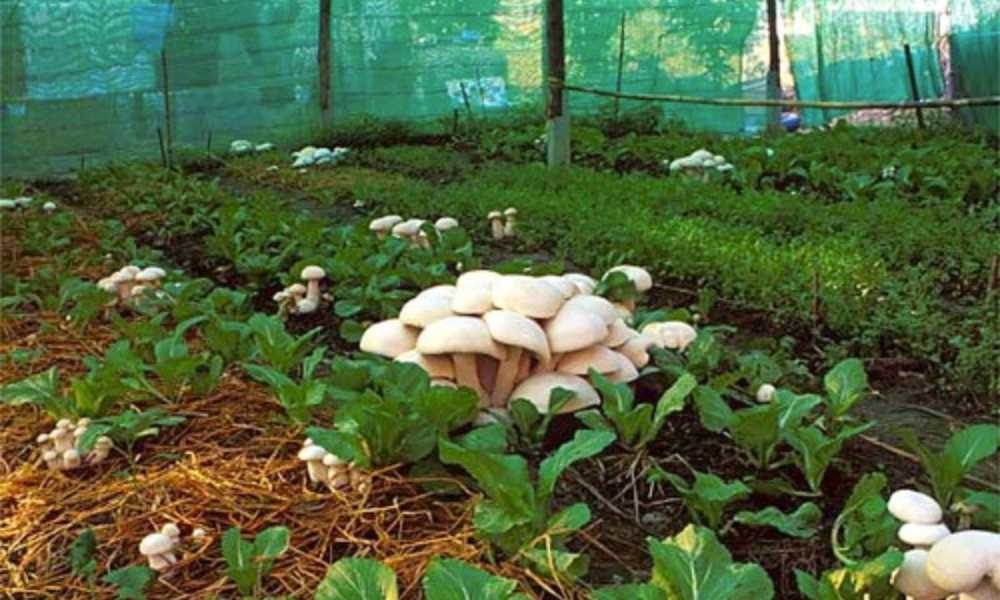Mushrooms can be grown in greenhouses, where the conditions are constantly warm and humid. The ideal temperature for growing mushrooms is around 70 degrees Fahrenheit, with 65 to 70 percent humidity. The substrate should be a mixture of 50 percent sawdust, 50 percent perlite, and a few wood shavings. Water should be added regularly, and the substrate should be kept moist but not wet.
How to grow mushrooms in a greenhouse is simple. You need a compost pile, some straw, manure, fresh sawdust, and a large pot. You will also need some heating pads or heat lamps. After you have all of the necessary items, you will need to set up your greenhouse. First, build a compost pile and add enough fresh sawdust to make a thick layer. Next, place your manure on top of the sawdust.
What are mushrooms?
Mushrooms are a popular and fun food to grow in the home. Mushrooms are a type of fungus that can be eaten as part of a meal or used in mushroom crafting. There are many different types of mushrooms, and they can be found growing throughout the world in various climates.
Mushrooms how do grow?
Mushrooms are one of the most common and widely consumed fungi in the world. They can be found in grocery stores, restaurants, and even as a supplement on the market. The reason for their popularity is that mushrooms have a wide variety of flavors including earthy, woodsy, fruity, and spicy. In this article, we will discuss how to grow mushrooms in a greenhouse.
There are many ways to grow mushrooms in a greenhouse. One common way is to spawn logs or blocks of colonized mushroom mycelium on sawdust or another substrate, and then transfer the spawn to prepared containers. Once the mushrooms grow large enough, you can harvest them. To get started with growing mushrooms in a greenhouse, start by choosing a spawning substrate and preparing the container for inoculation.
What are the pros of growing mushrooms in a greenhouse
There are many benefits to growing mushrooms in a greenhouse.
The benefit is that it saves on energy costs. Instead of using artificial light to grow mushrooms, you can use natural sunlight. This means you will save on your electricity bill.
The pros of growing mushrooms in a greenhouse are that it is a relatively easy way to grow mushrooms, the temperature and humidity can be controlled, and there is no need for sunlight. The biggest downside to growing mushrooms in a greenhouse is that the fungus will not spread as easily outside of the greenhouse, so it may be necessary to isolate colonies if desired.
Another benefit is that you can control the environment in which the mushrooms grow. You can adjust the temperature and humidity levels, which allows you to customize the growth of your mushrooms. This is especially important if you want to produce specific types of mushrooms, such as shiitake or portobello mushrooms.
A few steps to growing mushrooms in a greenhouse
If you want to grow mushrooms in a greenhouse, there are a few things you need to do. First, find a site that is well-drained. Second, make sure the soil is fertile and has good drainage. Third, add organic matter to the soil. Fourth, provide adequate sunlight and humidity levels. Fifth, inoculate the substrate with mycelium spores. Sixth, water and fertilize the substrate regularly. Seventh, monitor the growth of your mushrooms carefully! Eighth, enjoy your homegrown mushrooms! Finally, be sure to fertilize your mushrooms regularly with a balanced mix of nitrogen and phosphorus.
What kind of mushrooms do well in greenhouses?
Mushrooms are a great addition to any greenhouse. Some of the best mushrooms for growing in a greenhouse include oyster, shiitake, and chanterelle mushrooms. To grow these mushrooms successfully, you will need to follow some simple steps. First, create a suitable substrate. This can be anything from wood chips to organic matter. Next, inoculate the substrate with your desired mushroom spores. Finally, water and feed your plants regularly to ensure healthy growth.
What are the cons of growing mushrooms in a greenhouse?
There are a few potential cons to growing mushrooms in a greenhouse. The first is that the temperature range is narrower than outdoors, meaning that you may need to adjust your heating schedule. Additionally, the humidity levels are usually higher in greenhouses, which can lead to fungal and bacterial problems. And lastly, the light conditions can be quite different in a greenhouse than outside, which can impact how your mushrooms grow.
Conclusion
In conclusion, growing mushrooms in a greenhouse is a great way to increase production while controlling temperatures and humidity. By following these simple tips, you can create a thriving mushroom garden that will provide you with delicious mushrooms every time.
